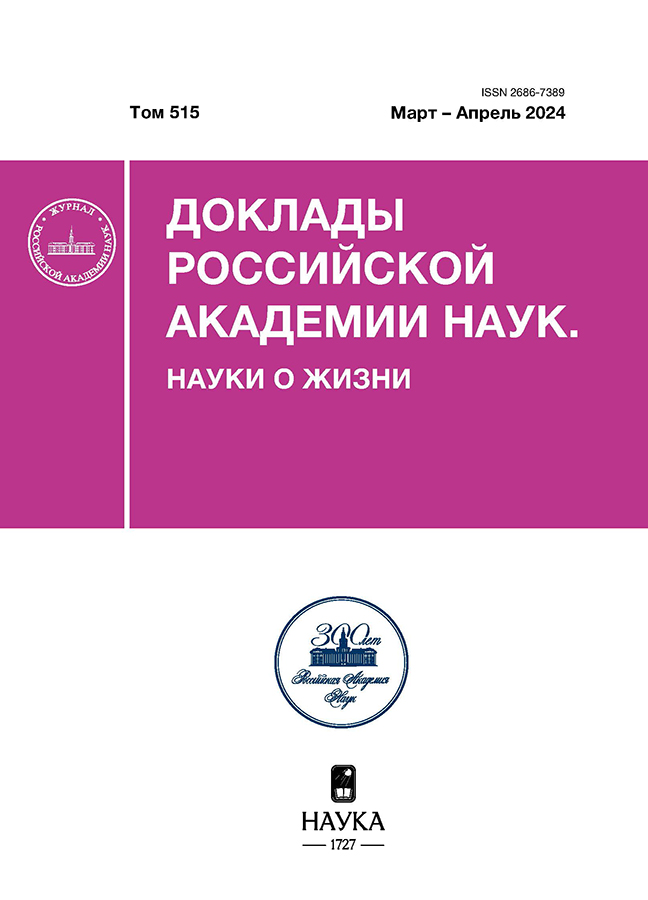Quantitative description of the N-protein of the SARS-CoV-2 virus degradation in cells stably expressing it under the influence of new modular nanotransporters
- Autores: Khramtsov Y.V.1, Ulasova A.V.1, Lupanova T.N.1, Georgiev G.P.1, Sobolev A.S.1,2
-
Afiliações:
- Institute of Gene Biology, RAS
- Lomonosov Moscow State University
- Edição: Volume 515, Nº 1 (2024)
- Páginas: 25-28
- Seção: Articles
- URL: https://ter-arkhiv.ru/2686-7389/article/view/651438
- DOI: https://doi.org/10.31857/S2686738924020053
- EDN: https://elibrary.ru/WFRQEA
- ID: 651438
Citar
Texto integral
Resumo
Two eukaryotic cell lines, A549 and A431, were obtained with stable expression of the nucleocapsid protein (N-protein) of the SARS-CoV-2 virus fused with the red fluorescent protein mRuby3. Using microscopy, the volumes of the cytoplasm and nucleus were determined for these cells. Using quantitative immunoblotting techniques, the concentrations of the N-mRuby3 fusion protein in their cytoplasm were assessed. They were 19 and 9 μM for A549 and A431 cells, respectively. Using these concentrations, the initial rate of N-protein degradation in the studied cells was estimated from the decrease in cell fluorescence. In A549 and A431 cells it turned out to be the same and equal to 84 nM per hour. The approach of quantitatively describing the degradation process can be applied to analyze the effectiveness of a wide class of antiviral drugs that cause degradation of viral proteins.
Texto integral
Sobre autores
Y. Khramtsov
Institute of Gene Biology, RAS
Autor responsável pela correspondência
Email: alsobolev@yandex.ru
Rússia, Moscow
A. Ulasova
Institute of Gene Biology, RAS
Email: alsobolev@yandex.ru
Rússia, Moscow
T. Lupanova
Institute of Gene Biology, RAS
Email: alsobolev@yandex.ru
Rússia, Moscow
G. Georgiev
Institute of Gene Biology, RAS
Email: alsobolev@yandex.ru
Academician
Rússia, MoscowA. Sobolev
Institute of Gene Biology, RAS; Lomonosov Moscow State University
Email: alsobolev@yandex.ru
Corresponding Member
Rússia, Moscow; MoscowBibliografia
- Surjit M., Lal S.K. // Infect Genet Evol. 2008. V. 8. P. 397–405.
- Wu C., Zheng M. // Preprints. 2020. 2020020247.
- Prajapat M., Sarma P., Shekhar N., et al. // Indian J Pharmacol. 2020. V. 52. P. 56.
- Liao H.-I., Olson C.A., Hwang S., et al. // J Biol Chem. 2009. V. 284. P. 17512–17520.
- Shipunova V.O., Deyev S.M. // Acta Naturae. 2022. V. 14. № 1(52). P. 54–72.
- Du Y., Zhang T., Meng X., et al. // Preprints. 2020. doi: 10.21203/rs.3.rs-25828/v1.
- Khramtsov Y.V., Ulasov A.V., Lupanova T.N., et al. // Dokl. Biochem. Biophys. 2023. V. 510. P. 87–90.
- Lu M., Liu T., Jiao Q., et al. // Eur J Med Chem. 2018. V. 146. P. 251–259.
- Fulcher L.J., Hutchinson L.D., Macartney T.J. et al. // Open biology. 2017. V. 7. 170066.
- Slastnikova T.A., Rosenkranz A.A., Khramtsov Y. V., et al. // Drug Des Devel Ther. 2017. V. 11. P. 1315–1334.
- Khramtsov Y.V., Ulasov A.V., Rosenkranz A.A., et al. // Pharmaceutics. 2023. V. 15, 324.
- Klionsky D.J., Abdel-Aziz A.K., Abdelfatah S., et al. // Autophagy. 2021. V. 17. № 1. P. 1–382.
Arquivos suplementares












